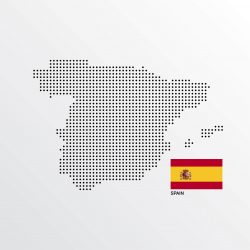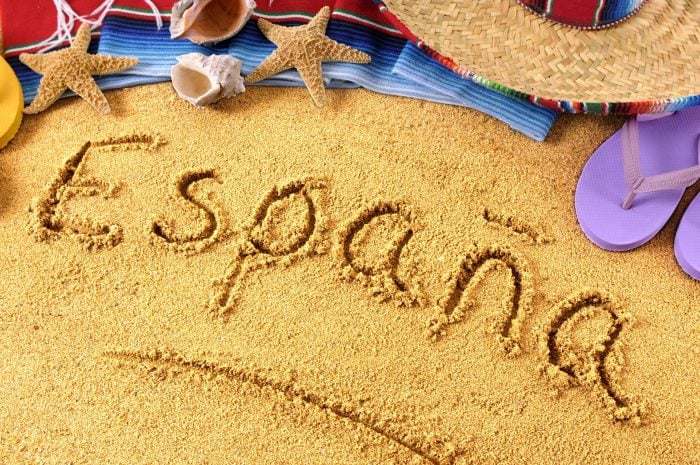Spanish Dialects and How You Can Tell Them Apart
One of the reasons why learning languages is so challenging is that most of them come in many different forms depending on what country (or region) you’re visiting. Think about English, for example. It goes without saying that a British person speaks differently from an American one.
But even those definitions are too broad. Where is this American from? Is he from New York or California? And what about the British one? Is she from Liverpool or Edinburgh?
With Spanish, of course, it’s the same.
Being the second most spoken language in the world, it’s no wonder that it’s so incredibly diverse, with dozens of dialects and accents with varying degrees of mutual intelligibility.
As there is no “best dialect” or accent, which Spanish dialects you choose to learn will depend on what you want to do with the language. But before you can choose which dialect suits your needs best, you should have very clear in mind what a dialect is.
Table of Contents
What Is a Dialect?
It could be argued that there are as many varieties of a language as there are speakers. However, the way speakers use the language tells us a lot about their age, occupation, gender, and even their political beliefs.
Similarly, speakers who live in the same region follow specific phonological, lexical and grammatical trends. These shared characteristics among speakers from the same geographical areas are what we call a dialect.
Before choosing which dialect to study, you should decide how you want to sound based on your personality and objectives and pick a model you can imitate. Some of the characteristics you should bear in mind are when choosing a model are where they were raised, their age, gender and level of education.
If you are 20 years old, you wouldn’t want to end up sounding as if you were 80, right?
Also, consider when and where you will use the language.
Would you like to go backpacking in Patagonia? Then you might want to study Argentinian and Chilean Spanish!
Do you want to learn Spanish so you can read Miguel de Cervantes’ Don Quixote? Then you should definitely go for Castilian Spanish.
Are you not sure what kind of Spanish you want to learn yet? That’s all right. After all, making this kind of choice can be a bit overwhelming.
To help you with your decision, we have made a list of Spanish dialects as spoken in different regions of Spain and their main characteristics.
Castilian Spanish
Although the words “español” and “castellano” are sometimes used as synonyms, here we’ll use the term Castilian to talk about the variety of Spanish spoken in the northern region of the country.
The Castilian dialect, in turn, has two main variants: Manchegan Castilian, found in Castilla-La Mancha; and Northern Castilian, found to the north of Madrid.
Pronunciation
What immediately distinguishes Castilian from other Spanish dialects is the fact that S and Z are pronounced differently.
In Castilian, the letter Z has a similar sound to the TH in English words like “think” and “through.” Caza (hunt) and casa (house), which have the same pronunciation in other varieties, are distinguished here by the sound of the second consonant.
When it comes to C, which is pronounced like a K in the words cited above, it also sounds like TH when followed by E or I, as in cebra (zebra) or cita (date).
Another characteristic that sets Castilian apart from other Spanish dialects is the dropping of D between vowels, especially at the end of words. Nublado (cloudy), for example, becomes nublao.
Mimado → mimao (spoilt); jugado → jugao (played); enseñado → enseñao (taught).
Finally, Castilian Spanish features a phenomenon called yeísmo, by which LL is pronounced like the Y in English words such as you and yet. Only in rural areas that are in contact with Catalan does LL preserve its distinctive pronunciation. Elsewhere:
lleno → yeno (full); grillo → griyo (cricket); llama → yama.
In the Castilian version of “Let it Go”, from the animated film Frozen, you can see many of the things we just discussed.
Notice, for example, how the singer pronounces the LL as a Y in words like brilla (shine) and huella (footprint) at the beginning of the song, and how she says distancia (distance) as “distanthia” in the second verse.
Grammar
Except in Galicia and some areas of Asturias and Leon, Castilian Spanish uses the present perfect to talk about the recent past.
This is one of the biggest differences between Castilian and Spanish dialects from Latin-American countries, where speakers use the preterit tense (more similar to the past simple tense) for this type of sentence.
Take a look at the following examples:
Castilian Spanish: Esta mañana me he encontrado a un amigo
Latin American Spanish: Este mañana me encontré a un amigo
English: I ran into a friend this morning.
Castilian Spanish: Hemos venido a andar en bici
Latin American Spanish: Vinimos a andar en bici
English: We came here to do some cycling
In most Spanish dialects, people use a specific conjugation for imperative sentences. In Castilian, however, it’s very common to hear the infinitive in this type of phrase. So, instead of saying “Salid de ahí inmediatamente,” speakers say “Salir de ahí inmediatamente,” using the infinitive form salir (to get out).
Andalusian Spanish
This variety can be found in the south of Spain in the regions of Andalusia, Ceuta, Melilla, and Gibraltar. This dialect is perhaps the most distinct of the southern varieties of peninsular Spanish, differing from other variants especially in the way it sounds.
Pronunciation
Unlike Castilian, Andalusian Spanish is distinguished by the pronunciation of the letters Z and C as S, a phenomenon known as seseo.
What does this mean? That whereas in Castilian Spanish casa and caza are pronounced in different ways (kasa, katha), in Andalusian they sound exactly the same.
The same happens with other pairs of words such as sima/cima or Sena/cena, which are homophones (i.e., words with different meanings but identical pronunciation) in Andalusian Spanish but not in other varieties.
Andalusians are also known for aspirating the S at the beginning of syllables, resulting in pronunciations such as:
señor → heñor (Sir)
bolso → bolho (bag)
esposa → espoha (wife)
If the S appears between vowels, it can even be omitted.
mesa → meha → méa (table)
pasa → paha → páa (raisin)
tasa → taha → táa (tax)
As regards the CH sound, which in all Spanish dialects has the same pronunciation it has in English, it is commonly softened to SH by Andalusian speakers.
muchacho → mushasho (boy)
coche → coshe (car)
techo → tesho (roof)
Something that will help you tell Andalusians apart from speakers of other Spanish dialects is the way they turn the R into an L and vice versa when these sounds happen at the end of a syllable.
el caldo → er cardo (the broth)
porque sí → polque sí (just because)
In this iconic interview with the legendary Lola Flores, you can see how she pronounces hacia adelante (forward) making the C like an S, and not like a Castilian Z. Also notice how she says things like “er comentario” instead of “el comentario,” changing L for R.
Grammar
In Andalusian Spanish, speakers use the infinitive for imperative sentences but only in the plural form. Instead of saying paraos, they say pararse (“ar” being the termination of infinitives, “se” being a pronoun). Instead of callaos, you would hear callarse.
Another common occurrence in Andalusian is that some nouns have a different gender than they do in all Spanish dialects.
el sartén → la sartén (the pan, masculine to feminine)
el fresco → la fresca (the breeze, feminine to masculine)
Finally, placing a definite article (el, la) before a person’s name, which is seen as incorrect and thus avoided in most Spanish dialects, is perfectly acceptable in Andalusian. This use is the result of close contact with Catalan, where placing the definite article before someone’s name is the norm.
¿Has hablado con el Bruno? (Have you talked to -the- Bruno?)
La Marta no está aquí. (-The- Marta is not here.)
Canarian Spanish
Canarian Spanish is the variety spoken in the Canary Islands. This dialect presents many similarities with Andalusian because the first inhabitants of this region came mostly from Seville, Jerez and Cadiz.
Although Canarian Spanish eventually developed independently from its Andalusian origins, many of the things we have said about Andalusian can be applied to Canarian as well. Let’s focus then, on the characteristics that set Canarian apart from other Spanish dialects.
Pronunciation
The letter S tends to be aspirated at the end of words.
buenas tardes → buenah tardeh (good afternoon)
muchos más → muchoh máh (many more)
The sound of the letter J and G when followed by an E or an I is softer than in other variants, similar to an H in English.
In this video about the beauty of the Canarian accent, the people interviewed in the street display some of the characteristics we mentioned above, especially the aspiration of S in words like “afectuosoh” (loving) and “cariñosoh” (affectionate).
Grammar
Canarian Spanish also boasts some very specific changes in the order and conjugation of words in common phrases. For example:
para que tú entiendas → para tú entender (so that you understand → you so to understand)
hace más de seis años → hay más de seis años (it’s been more than six years → there are more than six years)
cual → cualo (a very specific way of saying which)
As regards its vocabulary, Canarian Spanish has been influenced by Latin American culture much more than any other Spanish dialect. This is why Canarian speakers say guagua instead of autobús (bus), papa instead of patata (potato), and maní instead of cacahuate (peanut).
Have you already made up your mind about which dialect you would like to learn? At Language Trainers, we work with native Spanish teachers that will be glad to tell you all there is to know about the differences between Spanish dialects. Explore our Spanish courses now or send us a quick inquiry!


